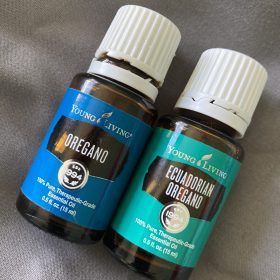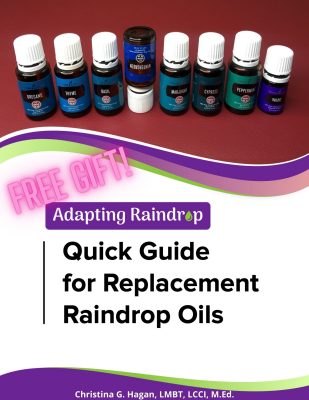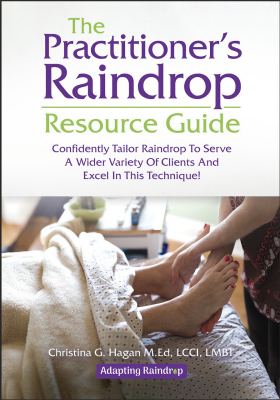When I picked these two heads of lettuce, I was super excited! I announced to my family that we were going to experience chemotypes in our salad tonight!
Chemotypes are something that is discussed in Dr. Stewarts, Chemistry of Essential Oils Made Simple book and is taught in the C.A.R.E. Chemistry of Essential Oil classes.
A chemotype is created when 2 plants of the same species grow in 2 different environmental locations. One may grow at the beach and one may grow in the mountains. Since they are growing and responding to different environments, they will have a slightly different chemistry based on how they responded to the environment. So even though they are the same type of plant, they will have slightly different chemistry based on where they where grown.
I had unknowingly grown a great example of chemotypes in my yard and was anxious to experience it at dinner.
This is my Chemotype story:
In the fall I always let a lettuce plant to go to seed in my garden. This way the seeds can sprout where they want and when they want. When the sprouts are big enough, I move them to a safe place in the garden bed in rows. I have lettuce right away in the spring this way!
This year, I had some sprout before the frost hit. This was the first year I had a little green house, so I put a few of these little sprouts in pots and put them in the warm, safe green house.
Fast forward a few weeks and I am harvesting delicious lettuce from my green house! I went to the garden to see how the sprouts that I had not moved to the green house were doing and was amazed to see the difference in the plants.
- These plants came from the same mama plant.
- They had the same type of soil.
- They grew only 50 feet way from each other.
- The only difference was one plant was in a protected environment and the other was exposed to the natural environment.
- The one in the protected environment grew BIG while the one in the natural environment stayed smaller.
Look at the difference between those plants!!
At dinner that night we all tested the difference between the green house leaf and a garden leaf.
We all could taste the difference in chemotypes. The green house leaf was sweet. The garden leaf tasted the same initially, but when you swallowed it, it was a little bitter. (They both tasted good, and we still ate them all up.)
Chemotypes are found in essential oils.
Young Living Essential Oils had the St. Maries Lavender and Mona Utah lavender, which are a great example of chemotypes. The seeds came from the same plant, they were just grown in two different locations. Both of these oils were similiar, but had significantly different chemical compositions based on where they grew.
Some essential oil companies have chemotype information on their labels. You’ll see the plant name along with CT, which stands for Chemotype and then the molecule that is in the oil based on where the plant grew. An example is Thymus vulgarus CT thymol.
Young Living Essential oil has two plants that sound like they could be chemotypes; Oregano and Ecuadorian Oregano. I had to learn more and see if these two oils were chemotypes or not. You can read what I learned and experienced with these two oils HERE.





